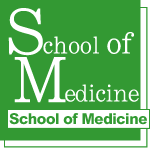|
|
|
|
|
|
 |
Introduction |
|
This center involves a legally controlled hot
area. All the experiments using radioactivity
must be performed in this area. The researchers
who carry out such experiments must be legally
authorized and registered to this center.
This center was established in 1960 on the Sugitsuma
campus and then was renewed in 1988 on the Hikarigaok
campus. The area for experimental use is 750m2.
The list of thirty-five nuclides of unsealed sources
and one nuclide of a sealed source are registered
to the government.
|
 |
Research |
|
| Physicochemical aspects of many kinds of intermediate
radical species and the behavior of bio-radicals
have been studied by use of electron spin resonance
(ESR) as a strong strategy. |
(K.Nakagawa) Three projects are going on:
| (1) |
investigation of electron transfer to
quinone and phenol compounds in inhomogeneous
solution systems, |
| (2) |
physical properties of micelle and vesicles
using spin probe methodology and ESR spectroscopy,
and |
| (3) |
monosaccharides radicals generated by
heavy ion irradiation. |
 |
Education |
|
| 1. |
Training of the safe handling of radioactivity
and the radiation protection for the researchers
who intend to be a registrant of this center. |
| 2. |
Lectures of an introduction to the nuclear
chemistry and the nuclear medicine for the
students of the medical school. |
| 3. |
Lectures of the safe handling of radioactivity
and the radiation protection for the students
of the medical school. |
|
 |
Publications |
|
| 1. |
K. Nakagawa, gDiffusion Coefficient and Relaxation Time of Aliphatic Spin Probes in a Unique Triglyceride Membrane,h Langmuir, in press (2003). |
| 2. |
K. Nakagawa, gSpin-Lattice Relaxation Times of Aliphatic Spin Probes in a Unique Triglyceride Membrane,h Chem. Lett., 666-667 (2002). |
| 3. |
K. Nakagawa, gPhotochemical Reactions of Antioxidant Sesamol in Aqueous Solution,h J. Am. Oil Chem. Soc., 77(11), 1205-1208 (2000). |
| 4. |
K. Nakagawa, gEffect of Chemotherapy on Ascorbate and Ascorbyl Radical in Cerebrospinal Fluid and Serum of Acute Lymphoblastic Leukemia,h Cell. Mol. Biol., 46 (8), 1375-1381 (2000). |
| 5. |
K. Nakagawa and T. Nishio, gElectron Paramagnetic Resonance Investigation of Sucrose Irradiated with Heavy Ions,h Radiat. Res., 153 (6), 835-839 (2000). |
| 6. |
MATSUMOTO Seiji, MORI Norio, TSUCHIHASI Nobuaki, OGATA Tateaki, Lin Yijing,@YOKOYAMA Hidekatsu, ISHIDA Shin-ichi, gEnhancement of Nitroxide-Reducing Activity in Rats after Chronic Administration of Vitamine E,Vitamine C and Idebenone Examined by an In Vivo Electron Spin Resonance,h Magn. Reson. Med., 40, 330-333 (1998). |
|
 |
Detailed Information |
|
| |
 |
To Contact Us |
|
| |
|
|

